Wrinkle Treatment in Warsaw
Search and Compare the Best Clinics and Doctors at the Lowest Prices for Wrinkle Treatment in Warsaw

Find the best clinics for Wrinkle Treatment in Warsaw
With Medijump you can browse 1 facilities offering Wrinkle Treatment procedures in Warsaw. The cheapest price available is $150 in Szczecin
Wrinkle Treatment in Poland
Price: $ 150
Wrinkle Treatment in Szczecin
Price: $ 150
Wrinkle Treatment in Warsaw
Price: $ 164
Thailand offers the best prices Worldwide
Price: $ 53
Retina Eye Hospital, located in Pulawska, Warsaw, Poland offers patients Wrinkle Treatment procedures among its total of 40 available procedures, across 3 different specialties. The cost of a Wrinkle Treatment procedure starts from €150, whilst the national average price is approximately €212. There are many specialists available at the Hospital, with 8 in total, and they are not accredited by any recognized accreditations institutes
Compare Before & After Photos of _procedure_photos.phpWrinkle Treatment
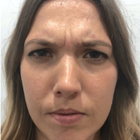
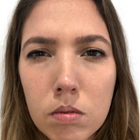
Front view
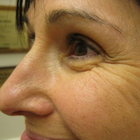

Half-side view
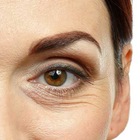
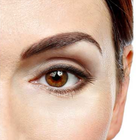
Front view


Half-side view

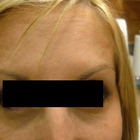
Front view

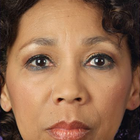
Front view
WHY US?
At Medijump, we're making medical easy. You can search, compare, discuss, and book your medical all in one place. We open the door to the best medical providers worldwide, saving you time and energy along the way, and it's all for FREE, no hidden fees, and no price markups guaranteed. So what are you waiting for?

Free

Best Price

Widest Selection

Risk-Free
What you need to know about Wrinkle Treatment in Warsaw
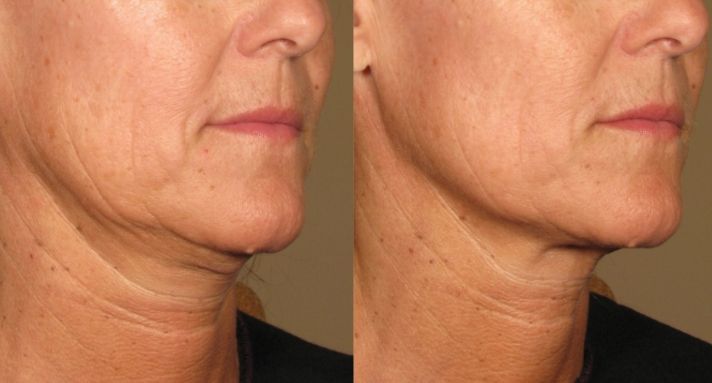
Ultherapy is an FDA-approved non-invasive skin tightening treatment. Known as the non-surgical alternative to facelift surgery, Ultherapy uses a focused ultrasound beam to boost collagen production in the deeper layers of your skin. Collagen is a natural protein that comes in numerous different types. It gives firmness and tightness to your skin. As we grow old, collagen loses its strength and firmness and shows laxity. This procedure gives collagen its strength back.
While a facelift offers more obvious results, it leaves scars and has other associated risks such as nerve damage and clot formation. Ultherapy, on the other hand, requires plenty of time to make its effects visible. Also, more sessions are needed to maintain its effects. It strengthens the loose skin of your face and neck and nullifies the effects of ageing on your face. It has the advantage that there is no downtime for it. You can apply makeup immediately after the procedure. This procedure needs to be repeated every six months or a year.
Ultherapy tightens and strengthens your loose skin without giving incisions and stitches. Instead, a focused ultrasound beam is used to lift your skin. Before going through the therapy, you have a lower eyebrow line, droopy lower eyelid, flat saggy cheeks, and loose skin of the neck. After Ultherapy, your skin looks glowing and rejuvenated, cheeks look healthy and plumped, and eyelids look lifted.
What does a Wrinkle Treatment Procedure Involve?
The procedure begins with cleaning your skin with an alcohol swab to kill any germs present at the spot. A specialized gel is applied to your skin. The focused ultrasound beam is used to produce thermal effects in the deeper layers of skin. The device is pressed firmly on to the skin of areas that needs strengthening. This induces new collagen production in these layers and gives firmness to the previous one. Ultrasound rays are applied over the areas where skin tightening is intended, such as the face and the neck. The time of procedure varies with the areas which are to be treated. It produces thermal effects which can be the cause of discomfort during the process. It lasts for a small period of time when the energy is being delivered into skin layers. This slight discomfort is a sign that the collagen-boosting process has been started.
How Long Should I Stay in Warsaw for a Wrinkle Treatment Procedure?
Ultherapy takes 1 to 1.5 hours or more depending upon the dimensions of the area which is being treated. Since it is an outpatient procedure, you can leave for home on the same day of the treatment. However, you should plan to stay in Warsaw for at least 5 days after your procedure. This will allow for the initial recovery and follow-up check-ups. Slight swelling and discomfort are normal during your stay. However, if it aggravates, there might be something wrong. Your health conditions are monitored during this duration.
What's the Recovery Time for Wrinkle Treatment Procedures in Warsaw?
As there is no downtime, you need not take any day off from work. You can get back to work immediately after the therapy. Minimal bruising is reported at the sites of Ultherapy where bones are present. This discomfort is for a small period of time. There might be tenderness and swelling in your skin which can last for one month after the procedure. 3 to 6 months are required for the results to become evident. Keep in mind that everyone continues to age and no process or treatment can stop aging. Therefore, the effects of Ultherapy subsides after a few years. Touch up treatments help to maintain its effects.
What sort of Aftercare is Required for Wrinkle Treatment Procedures in Warsaw?
After going through Ultherapy, take care of the following points to look after you:
- Avoid contact with direct sunlight for 2 to 3 months after this therapy. At the first place do not go outside in day time. If it is necessary, wear a strong sunscreen to protect your skin from harmful rays of light.
- Do not apply any product on your skin which can cause allergy or irritation.
- Use icepacks to ease you from itching and swelling. They are very effective in reducing redness.
- Do not massage and rub your skin for at least 1 to 2 weeks. It can aggravate redness and irritation in your skin.
- Cover yourself properly when going out after the procedure.
- Moisturize your skin twice or thrice a day. Use a moisturizer prescribed by your doctor.
What's the Success Rate of Wrinkle Treatment Procedures in Warsaw?
This therapy is almost always successful. Results vary and their time of appearance varies. Some people show more positive results while others show a moderate difference in their physical appearance. But it works on all. According to a study, 65% of the patients reported improvement in their skin quality after 2 to 8 months. While 67% seemed very satisfied with the results after only 3 months. The success of Ultherapy depends upon your genes and other factors too.
Are there Alternatives to Wrinkle Treatment Procedures in Warsaw?
The following are some alternatives to Ultherapy:
- Microcurrent facelift: this involves electrical stimulation of your tissues, skin, and muscles to increase their tone and impart a rejuvenating effect. Also, electrical current boosts collagen production and increases blood circulation in your body. It shows immediate results which can last for 48 hours only. You can opt for it for special events.
- Dermal fillers: also known as a liquid facelift, dermal fillers such as Sculptra, Juvederm, and Restylane are injected into your skin to give your facial features a lift. It treats wrinkles and aging lines on your skin. Each dermal filler works differently in different parts of your body.
- Laser facelift: laser light is used to stimulate inner layers of your skin to boost collagen production. This requires 30 minutes with no downtime.
All the techniques mentioned above are minimally invasive with almost no downtime, pain and incisions.
Overall, you will look younger than your actual age. But its effects last for only 12 to 15 months, after which you will need touch ups.
Whilst the information presented here has been accurately sourced and verified by a medical professional for its accuracy, it is still advised to consult with your doctor before pursuing a medical treatment at one of the listed medical providers
No Time?
Tell us what you're looking for and we'll reachout to the top clinics all at once
Enquire Now

Popular Procedures in Warsaw
Prices Start From $111

Prices Start From $16

Prices Start From $28

Prices Start From $5

Recommended Medical Centers in Warsaw for Wrinkle Treatment

- Interpreter services
- Translation service
- Religious facilities
- Medical records transfer
- Medical travel insurance
- Health insurance coordination
- TV in the room
- Safe in the room
- Phone in the room
- Private rooms for patients available

- Interpreter services
- Translation service
- Religious facilities
- Medical records transfer
- Medical travel insurance
- Health insurance coordination
- TV in the room
- Safe in the room
- Phone in the room
- Private rooms for patients available

- Interpreter services
- Translation service
- Religious facilities
- Medical records transfer
- Medical travel insurance
- Health insurance coordination
- TV in the room
- Safe in the room
- Phone in the room
- Private rooms for patients available

- Interpreter services
- Translation service
- Religious facilities
- Medical records transfer
- Medical travel insurance
- Health insurance coordination
- TV in the room
- Safe in the room
- Phone in the room
- Private rooms for patients available

- Interpreter services
- Translation service
- Religious facilities
- Medical records transfer
- Medical travel insurance
- Health insurance coordination
- TV in the room
- Safe in the room
- Phone in the room
- Private rooms for patients available

- Interpreter services
- Translation service
- Religious facilities
- Medical records transfer
- Medical travel insurance
- Health insurance coordination
- TV in the room
- Safe in the room
- Phone in the room
- Private rooms for patients available

- Interpreter services
- Translation service
- Religious facilities
- Medical records transfer
- Medical travel insurance
- Health insurance coordination
- TV in the room
- Safe in the room
- Phone in the room
- Private rooms for patients available

- Interpreter services
- Translation service
- Religious facilities
- Medical records transfer
- Medical travel insurance
- Health insurance coordination
- TV in the room
- Safe in the room
- Phone in the room
- Private rooms for patients available

- Interpreter services
- Translation service
- Religious facilities
- Medical records transfer
- Medical travel insurance
- Health insurance coordination
- TV in the room
- Safe in the room
- Phone in the room
- Private rooms for patients available

- Interpreter services
- Translation service
- Religious facilities
- Medical records transfer
- Medical travel insurance
- Health insurance coordination
- TV in the room
- Safe in the room
- Phone in the room
- Private rooms for patients available
Wrinkle Treatment in and around Warsaw
About Warsaw
As the capital and largest city of Poland, Warsaw continues to charm its visitors with diverse architecture, cultural treasures, stunning outdoor spaces, and superb dining spots. With Poland’s recent emerging popularity in medical tourism, the city has seen an influx of foreign patients coming for its world-class healthcare. The city’s very high standard of living and universal healthcare system are seen as an attractive choice for international medical tourists, particularly those from the surrounding countries. Both the public and private medical centers in this city are equipped with the latest medical technology and are offering a wide range of medical procedures at significantly lower prices than other countries in Europe. The most sought-after procedures in the city are cosmetic surgery, orthopedic, bariatric, and dental treatments.
Popular Parts of Warsaw
Warsaw offers a beautiful blend of old and new. Visitors are welcomed with restored Gothic buildings and modern glass structures standing side by side. One of the most popular attractions is the Palace of Culture & Science, which is a ‘gift of friendship’ from the Soviet Union and is the second tallest building in Poland. As a vast recreation and educational facility, this building is filled with theatres, cinemas, and museums. Most people also come to wander around the streets of the city’s Old Town, the oldest part of the city, to see medieval architecture and visit the Old Town Market Place. Warsaw is also known as the former home of Frédéric François Chopin and visitors are welcome to retrace his steps by strolling around Saxon Garden.
Transport in Warsaw
The main airport is Warsaw Frederic Chopin Airport and it is the largest and busiest airport in Poland that connects with many cities around the world. To get around Warsaw, local buses are available and they’re reasonably priced. Taxis are the most convenient way to get around and are relatively cheap. However, ensure to avoid unlicensed taxi drivers as they will charge more. The safest way to get a taxi is by asking your hotel staff for the number of the taxi company they use. Cycling is also a good way to explore the city.
Visas in Warsaw
Since Poland is a part of the Schengen area, citizens of several countries, including the US, Canada, Australia, and Japan, can stay in Warsaw without a visa for up to 90 days. EU citizens do not need a visa and are allowed to stay indefinitely. Citizens of other countries are required to obtain a visa in advance. A passport valid for at least 6 months is required.
Weather in Warsaw
Summer (June – August) has unpredictable weather with warm temperatures, sometimes reaching 30°C. Autumn (September – November) brings cooler temperatures and more pleasant weather. Winter (December – early March) can be freezing, with the temperatures dropping to -20°C on the coldest days. Spring (late March-May) is characterized by warmer temperatures and less rain.
Additional Info
- Local Currency: Polish Zloty (PLN) is the official currency and 1 USD converts to approx. 3.8 PLN.
- Money & Payments: ATMs are widely available in Warsaw. Credit cards can be used in most restaurants and hotels. Tipping is optional.
- Local Language: Polish is the official language. Most people in tourist areas can speak decent English.
- Local Culture and Religion: Warsaw is a multi-cultural city. Christianity is the largest religion, but other religions are also present in the city.
- Public Holidays: Warsaw celebrates major Christian holidays, such as Christmas Day and Easter. There are also some national holidays celebrated in the city, including Constitution Day and Independence Day.
Popular Searches
- Plastic Surgery in Thailand
- Dental Implants in Thailand
- Hair Transplant in Thailand
- Breast Augmentation Thailand
- Gastric Sleeve in Thailand
- Gender Reassignment Surgery in Thailand
- Laser Hair Removal in Bangkok
- Botox in Bangkok
- Dermatology in Bangkok
- Breast Augmentation in Bangkok
- Coolsculpting in Bangkok
- Veneers in Turkey
- Hair Transplant in Turkey
- Rhinoplasty in Turkey
- Stem Cell Therapy in Mexico
- Rhinoplasty in Mexico
- Liposuction in Mexico
- Coolsculpting in Tijuana
- Rhinoplasty in Korea
- Scar Removal in Korea
- Gastric Sleeve in Turkey
- Bone Marrow Transplant in India
- Invisalign in Malaysia
- Plastic Surgery in the Dominican Republic
- Tummy Tuck in the Dominican Republic
- Plastic and Cosmetic Surgery in Poland
- Rhinoplasty in Poland
- Hair Implant in Poland
- Dental Implants in Poland
- IVF in Turkey
